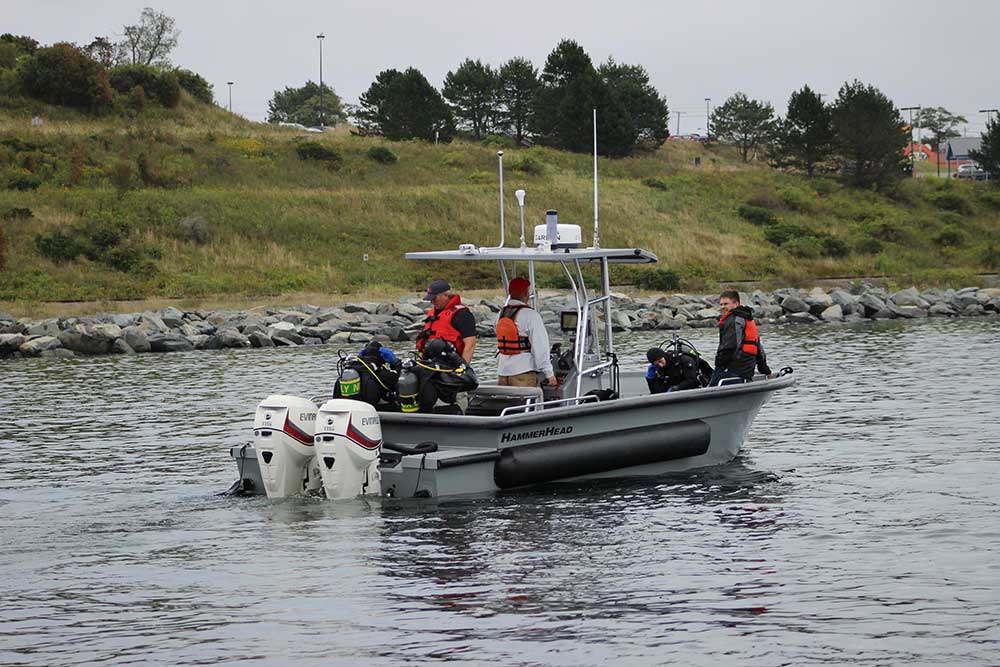Overview
The aim is to provide new entrants, and those who now require a Transport Canada qualification to operate small commercial vessels, with the knowledge and skills to obtain the Small Vessel Operator Proficiency (SVOP) license. The course is theoretical and does not, under Transport Canada’s standard, require practical boat work. Where possible, Survival Systems Training Ltd. will include practical boat handling and other skills where a client can provide their own boat(s).
Clients are advised to verify with Transport Canada Marine Safety that the SVOP certificate is the one they require to operate the boat in question as there are limitations on the size, type and voyage of the vessel this certificate is valid for.
The course meets the requirements of Transport Canada TP Document 14692 – Small Vessel Operator Proficiency Training Course.
PROGRAM CONTENT
- Understand the scope, purpose and limitations of the Small Vessel regulations and the need for qualifications and boat inspection
- Understanding basic boat types, construction, propulsion plants and marine terminology
- Plan a voyage and determine what navigational aids are present and where hazards are that need to be avoided
- Understand the buoyage system and recognize the various types of buoys and determine their meaning
- Understand the collision regulations and apply them as they relate to the operation of a small boat
- Understand a vessel’s stability and what actions may reduce or eliminate that stability slowly or instantly
- Determine how and when to obtain weather and tidal information prior to and during a voyage
- Use GPS and compass bearings, and understand the function of radar in navigation and collision avoidance in clear and reduced visibility
- Pre plan for, and respond to, emergency situations and utilize the resources available during an emergency
- Prevent marine pollution and understand the consequences of causing pollution
- Understand the need for safe working practices on small vessels and the need to develop a safety culture in the work place
- Develop check lists for pre-departure, layup, preparations for the season, end of trip, etc.
- Determine which Canadian regulations apply to the vessel involved and where to obtain these regulations and how to update any information taken from these regulations
COURSE OBJECTIVES
- Provide the trainee with the confidence, knowledge and skills to operate a small commercial vessel safely and effectively.
- Provide the trainee with the knowledge and skills to plan the trip, execute and complete the trip safely and effectively
- Provide the trainee with the knowledge when NOT to attempt the voyage because of weather, sea, or other conditions making it unsafe to proceed
- Provide the trainee with the knowledge of what types of hull and propulsion systems are available and to determine which is appropriate to their needs and understand the advantages and limitations of each hull type and propulsion system
- Provide the trainee with the basic knowledge of boat handling and docking manoeuvres
- Provide the trainee with the knowledge of how to read a chart, determine the vessel’s position by electronic aids as well as by compass bearings and use the Canadian buoyage system as an aid to navigation
- Provide the trainee with the knowledge of what actions are required in an emergency, what resources can be called upon and how to access them quickly and effectively in an emergency
- Provide the trainee with the knowledge to prevent pollution and of the consequences of causing pollution
- Provide the trainee with the knowledge of how to access the appropriate regulations, TP documents and standards as appropriate to their needs
- Provide the trainee with quick reference check lists for a variety of emergency or infrequently performed activities so they do not miss a vital step in the process
DURATION
A minimum of 26 hours of training over four (4) days. If the course is combined with the Small Non-Pleasure Vessel basic Safety (MED A3) course, the duration is five (5) days.
Course Details
PREREQUISITES
- Must be at least 18 years of age for SVOP certificate to be valid.
- Trainees are expected to be in a good state of health and physically capable of fully taking part in all program activities. Trainees are expected to participate in all physical training requirements. WITHOUT EXCEPTION, those trainees in non-compliance will be refused and billed the full program fee.
- A valid Government Identification is required and must be presented for registration and to the instructor on the first day of course commencement. (Driver’s License, Passport, Vantage card)
WITHOUT EXCEPTION, those trainees in non-compliance will be refused and billed the full program fee.
CERTIFICATION
All persons who successfully complete the program based on the performance standards will receive:
- A Transport Canada certificate of completion for Small Vessel Operator Proficiency
- A plastic wallet card will be issued to meet the requirement for the certificate to be carried at all times on the water
Request Information or Register
Gallery

